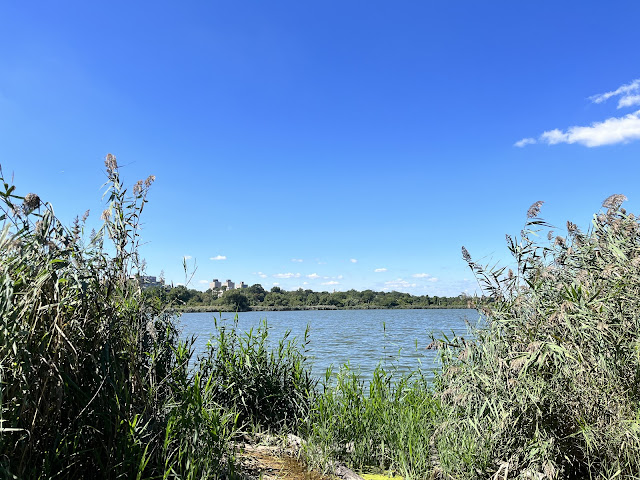"During at least three glacial periods, including the Wisconsin glaciation around 20,000 years ago, ice sheets advanced south across North America carving moraines, valleys, and hills. In particular, bays and estuaries were formed along the north shore of Long Island. During glaciation, the meadows surrounding the Flushing River were formed just north of the terminal moraine that runs across Long Island, which consisted of sand, gravel, clay and boulders. The moraine created a drainage divide, with rivers north of the moraine such as the future Flushing River emptying into the north shore. The Flushing Meadows site became a glacial lake, and then a salt marsh after the ice melted. Prior to glaciation, the Flushing River valley was used by the Hudson River to drain southward into the Atlantic Ocean.[88] Through the 19th century, wetlands continued to straddle Flushing River. Species inhabiting the site included waterfowl and fiddler crab, with fish using water pools for spawning.
The area was first settled by Algonquian Native Americans of Long Island (referred to erroneously as "Mantinecocks"). They consisted of the Canarsee and Rockaway Lenape groups, which inhabited coastal wetlands across Queens and Brooklyn.
The town of Flushing was settled in 1645 under charter of the Dutch West India Company. Both the town and the creek were thus named after the port of Vlissingen, in the southwestern Netherlands. The first European settler to move to the vicinity of Flushing Creek was Robert Coe, an Englishman who built a house near Horse Brook (now the site of the Long Island Expressway) on the creek's western bank."
"In 1930, New York City parks commissioner Robert Moses released plans for numerous parks and highways in the city, including a Flushing River Park. Five years later, Flushing Meadows was selected as the site for the 1939 World's Fair. Work on the World's Fair site began the next year. The project primarily involved leveling the ash mounds, with the leftover material used to fill other areas of the meadow. Two parts of the river were excavated to create Meadow and Willow Lake, while much of the rest of the Flushing River was diverted into underground culverts. The Tidal Gate Bridge was built at the park's northern end to prevent tidal flow from flooding the lakes. In addition to recreation, the lakes would serve as repositories for excess storm runoff. By then, Horse Brook had already been covered over, while Kissena Creek was in the process of being covered over. Dammed and reduced in size, the Flushing River became navigable only north of Roosevelt Avenue. At its southern end, the Jamaica subway yard reduced some of the flow coming from the headwaters. The central portion of the Flushing River was repurposed as part of the World's Fair's Court of States."
Lenape People They were matrilineal!
